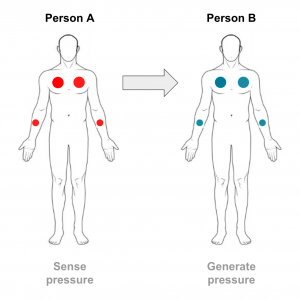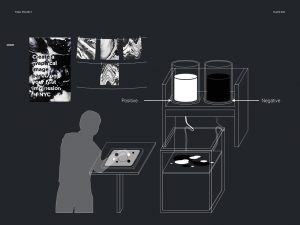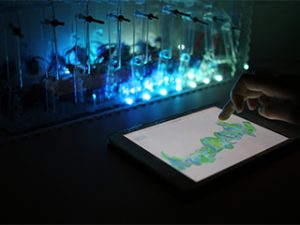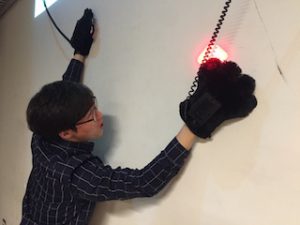Anastasios Germanidis
Experience the bodily sensations of another person
http://agermanidis.com/#empathy-suit
Description
The Empathy Suit is a full-body suit (shoulders to feet) for measuring, communicating, and reproducing pressure sensations from one wearer to another. It consists of a grid of custom-made FSR sensors (for detecting pressure) and vibration motors (for generating pressure).
In Follow Mode, an Empathy Suit wearer can be connected to any other Empathy Suit and experience every pressure sensation the person they are following is experiencing in real-time. In Playback Mode, the Empathy Suit wearer can relive “body memories” (time-series of pressure sensations) that have been recorded by previous Empathy Suit wearers.
Displayed on the show will be two Empathy Suits synchronized using Bluetooth LE through a laptop. Visitors will be invited to wear the suits, either in pairs in Follow Mode (one person following the other), or individually in Playback Mode. Behind the suits, on the wall, there will be visual and textual context, including related prior works.
Classes
Introduction to Physical Computing ITPG-GT.2301.006, Introduction to Physical Computing ITPG-GT.2301.003, Introduction to Physical Computing ITPG-GT.2301.001, Introduction to Physical Computing ITPG-GT.2301.002, Introduction to Physical Computing ITPG-GT.2301.004, Introduction to Physical Computing ITPG-GT.2301.005









